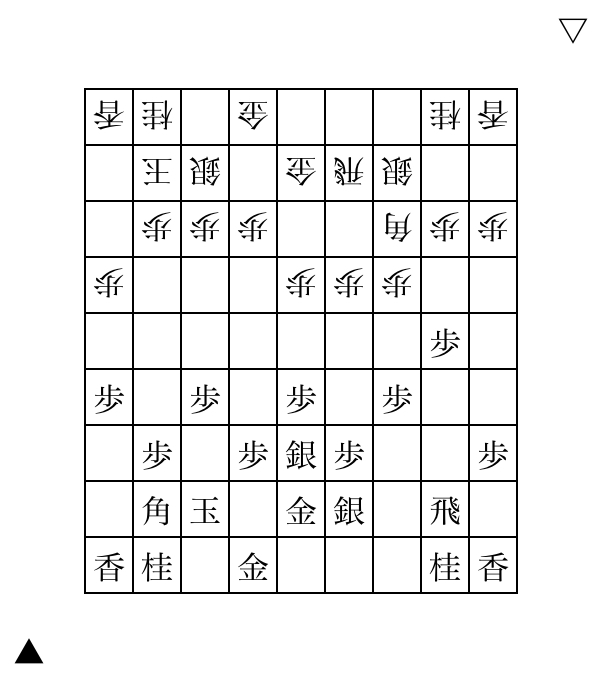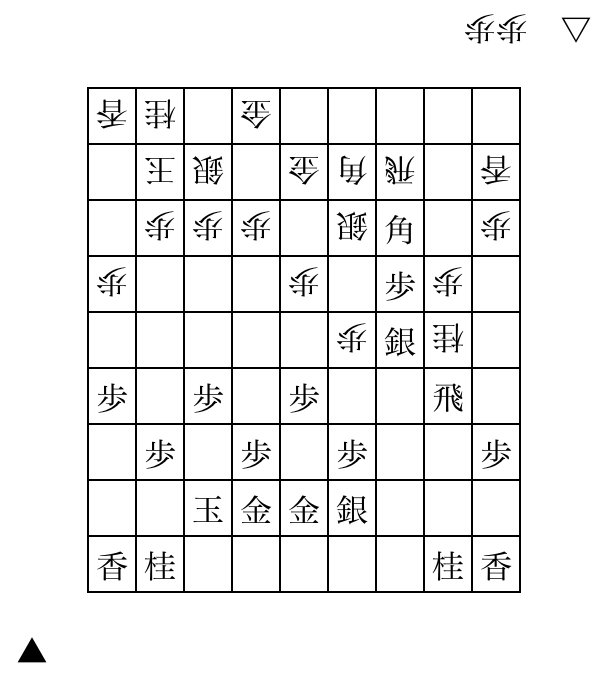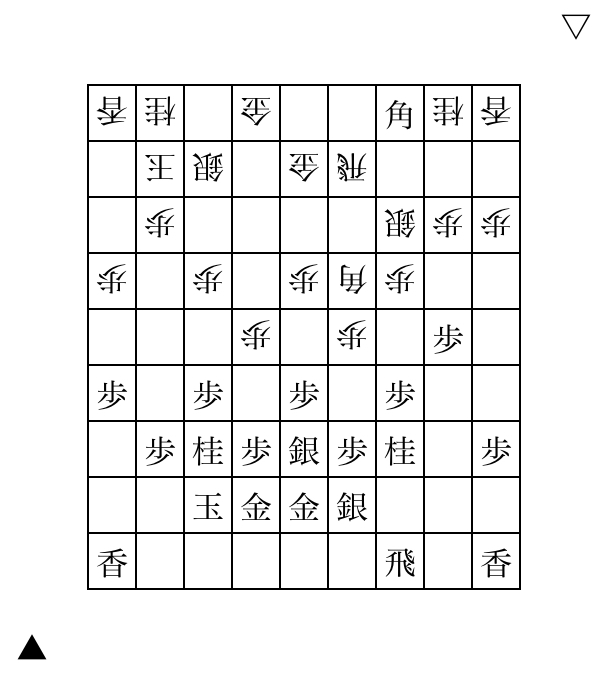The Saginomiya Joseki is a rapid attack Joseki in static rook vs 4th-file rook. The opening strategy was invented by two professional players; Teruichi Aono and Kunio Yonenaga.
It is named after the place in Tokyo, where the two inventors lived. Both of them are static rook player. The strategy was became famous when Yonenaga frequently chose the opening in title games.
The Joseki was introduced as a revision of Yamada Joseki. Previously existing common moves of Yamada Joseki was recognized as disadvantaged to static rook. So, Aono and Yonenaga had to find another way. The basic idea of Saginomiya Joseki is to postpone the attack just a little, and watch what the opponent do. The picture is at the position of move 24, and it is exactly the same as the Yamada Joseki. From here, static rook begin attack by P-35 in Yamada Joseki, however, it does not well work. Instead of start attacking, static rook seeks a moment with keep constructing the castle like G-78. Then 4th-file rook has to wait as well as P-64, but this is sacrificing a future chance of counter attacking, like dropping bishop at 64 which is aiming rook at 28 and lance at 19.
After G-68 and P-64, static rook moves rook to 38 getting pressure to the non defended pawn in front of the bishop. If 4th-file rook open the bishop line at this moment, static rook can proceed the game with supremacy. A standard moves of this Joseki is as below. (It seems that mobile browser does not well display the board. In that case, please check this link to Shogi Albatros.)

0Moves
4th-file rook had to find another way to deal with the waiting tactics. The best move is S-43 to defense the pawn at 34. Static rook begins the attack with pushing pawn to 35.
Moves after the 27 moves(▲R-38): △S-43, ▲P-35, △Px35, ▲S-46, △P-45, ▲Bx33, △Kx33, ▲Sx35, △Kx25, ▲P*34, △R-32, ▲R-28, △P-24, ▲B*33, △B*64, ▲R-26, △B-42.
The result position (44 moves) is almost equal game, but slightly advantaged to 4th-file rook side. 4th-file rook succeeds to utilize the knight, and castling of mino is superior to the static rook’s formation. If 4th-file side proceed the game evenly in the right side of the board, one can take the advantage at the end of the game. (For player, please check this link to Shogi Albatros.)




コメント